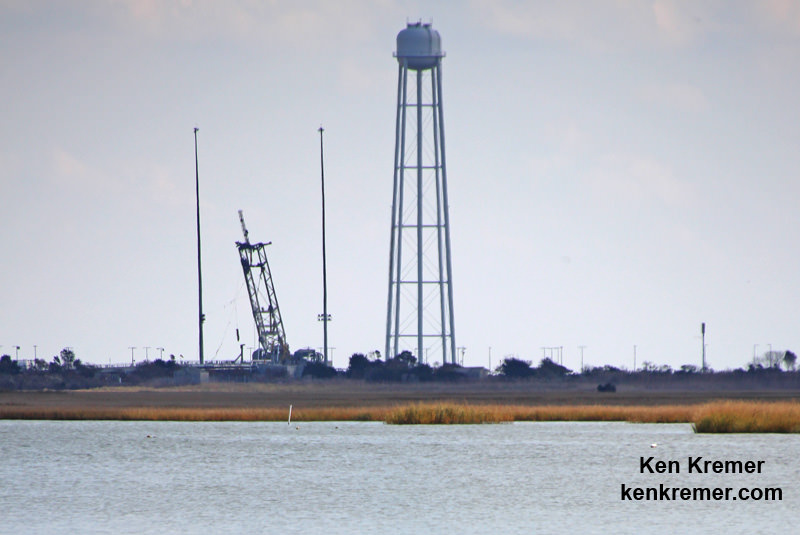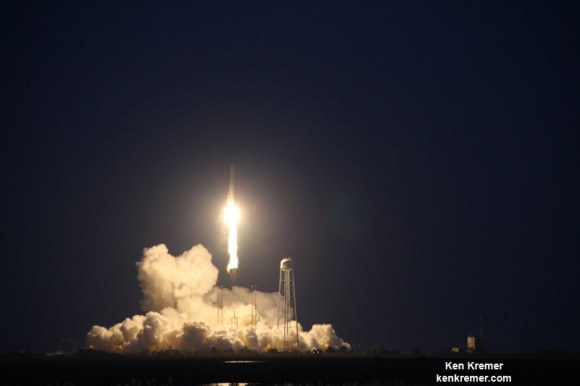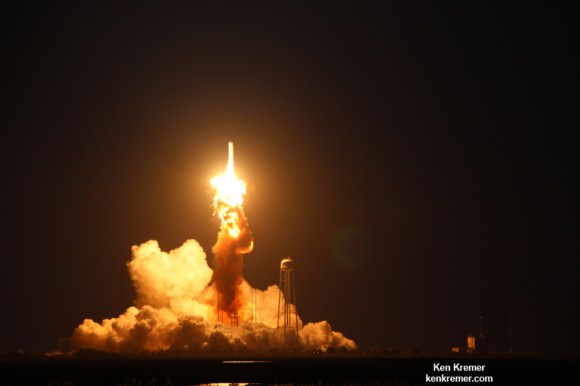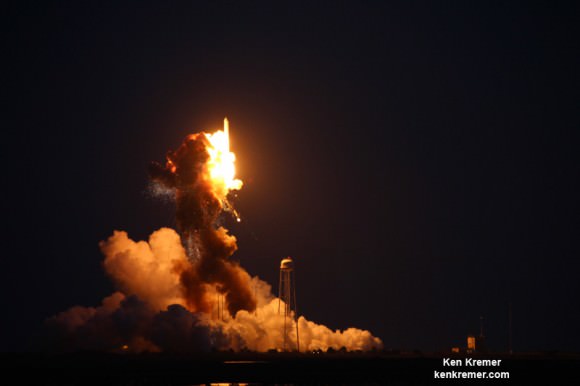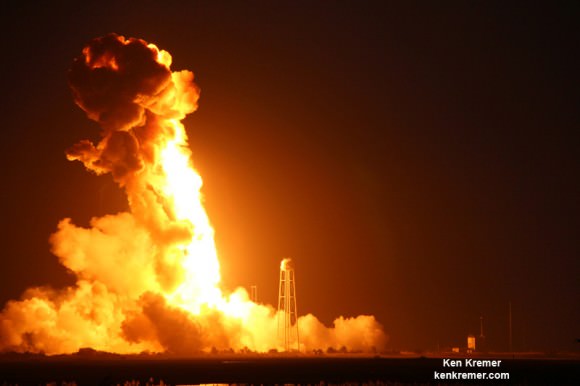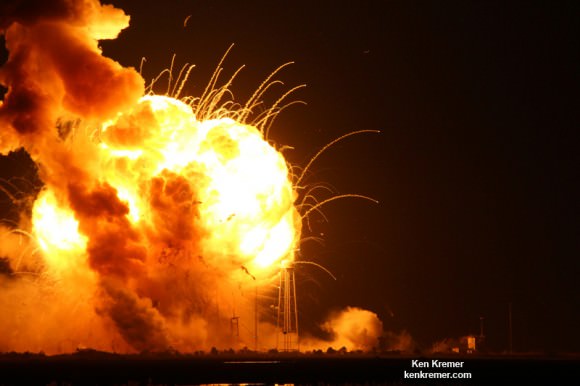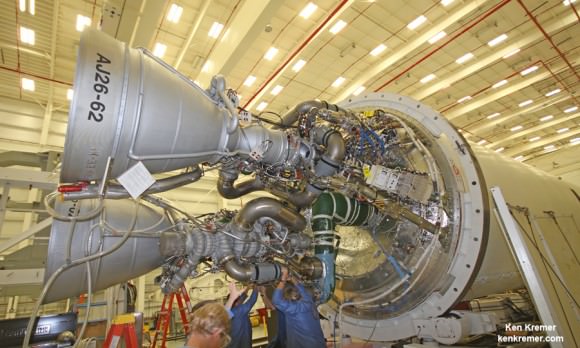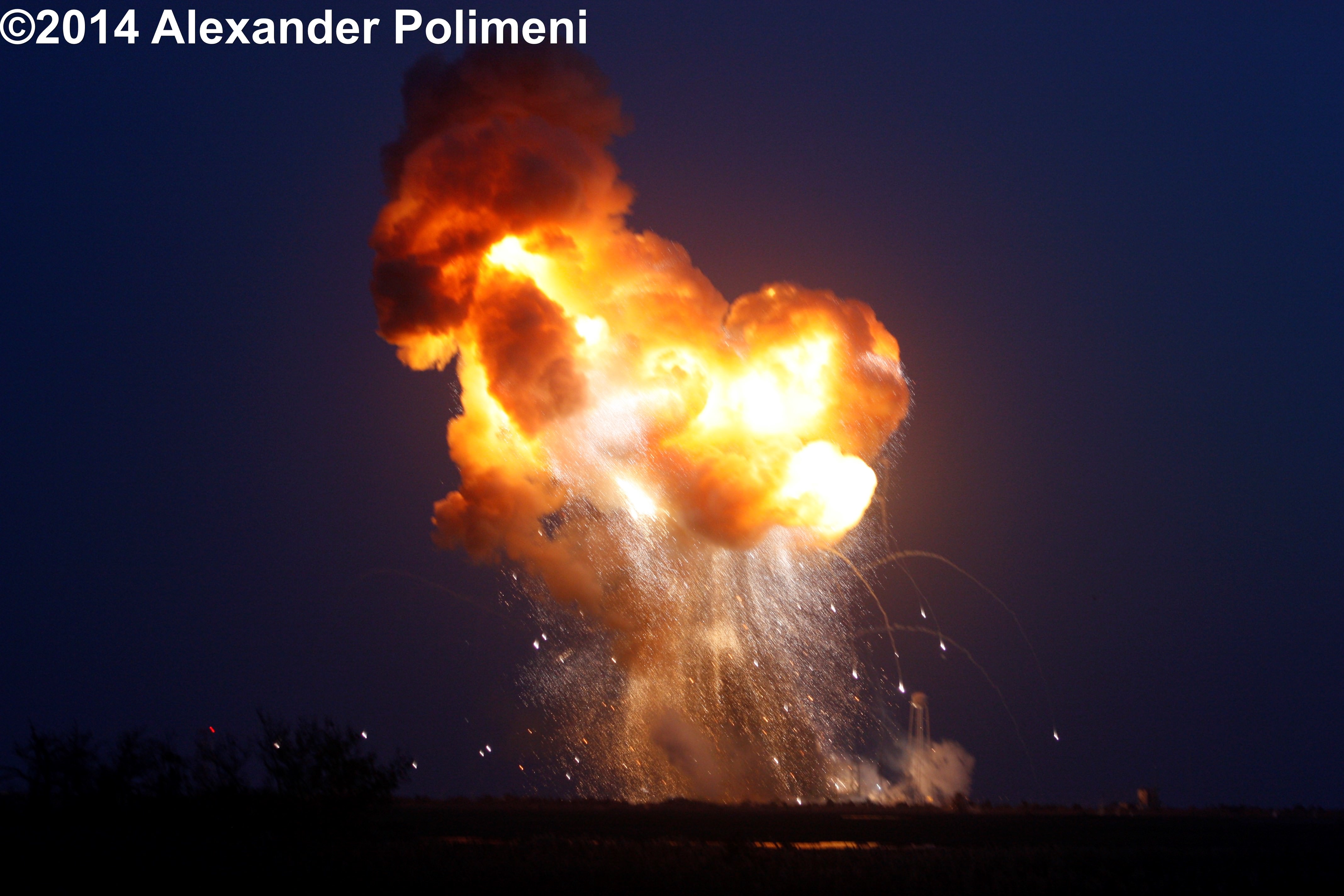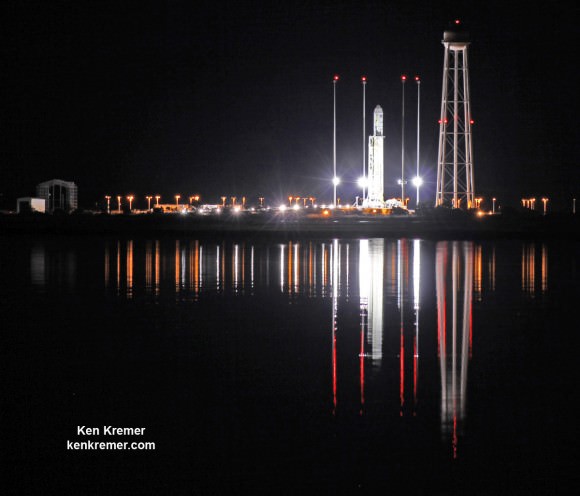Damage is visible to Launch Pad 0A following catastrophic failure of Orbital Sciences Antares rocket moments after liftoff from NASA’s Wallops Flight Facility, VA, on Oct. 28, 2014, at 6:22 p.m. Credit: Ken Kremer – kenkremer.com
Story updated with link to Ken Kremer interview with NBC Nightly News[/caption]
NASA WALLOPS FLIGHT FACILITY, VA – Some damage is clearly discernible to the Antares rocket launch pad in the aftermath of the sudden catastrophic explosion that completely consumed the rocket and its NASA contracted cargo just seconds after its liftoff NASA’s Wallops Flight Facility, Va, at 6:22 p.m. EDT on Tuesday, October 28.
From a public viewing area about two miles away, I captured some side views of the pad complex and surroundings.
Check out my before and after views of the launch pad to compare the scenery
I was interviewed by NBC News and you can watch the entire story and see my Antares explosion photos featured at NBC Nightly News on Oct. 29 here.
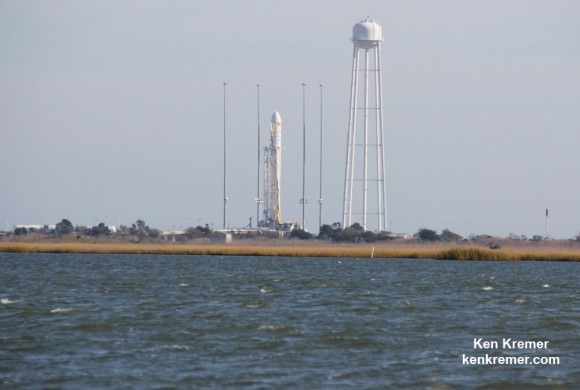
The aborted blastoff of the 14 story Antares rocket ended in a raging inferno that set the sky on fire in raging inferno starting barely 10 seconds after what appeared to be a normal liftoff.
Looking at the photos, its immediately apparent that two of the pads four lightning suppression rods have been blown away. Indeed in the photos one can see them being hurled away in the swirling inferno.
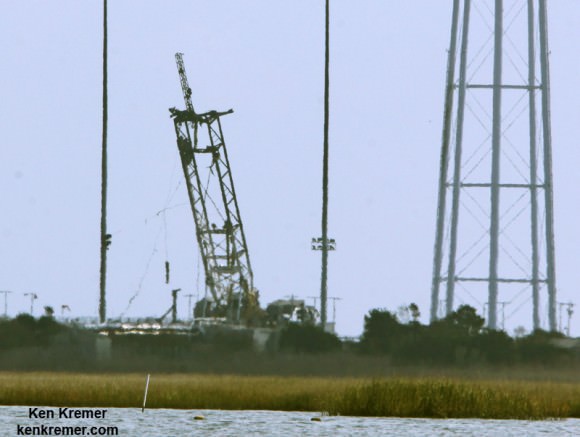
There is also some noticeable damage to the transporter erector launcher used to move transport and raise the rocket to its vertical launch position.
The good news is that the launch ramp leading to the launch ramp leading to the launch mount is still intact. The giant water deluge tower is still standing.
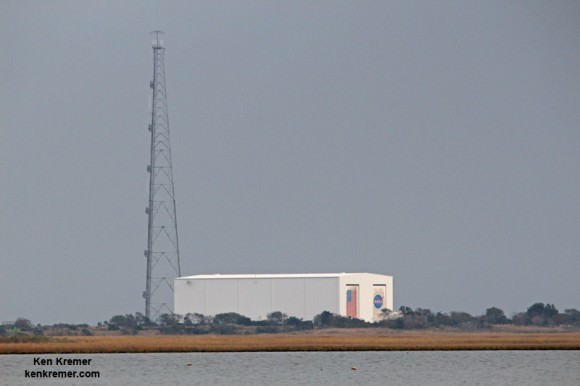
Likewise the processing facility where the Antares rocket undergoes final assembly and integration with the Cygnus cargo module appears to have escaped damage, at least on the two sides visible to me.
The outer structure of the Horizontal Integration Facility (HIF) appears intact with no significant harm following the launch failure. The HIF is located about 1 mile north of pad 0A.
The most severe damage was suffered by the nearby sounding rocket launcher with the entire side facing the pad blown away.
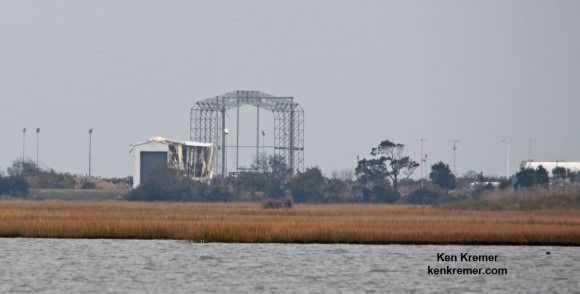
Watch here for Ken’s onsite reporting direct from NASA Wallops.
Stay tuned here for Ken’s continuing Earth and Planetary science and human spaceflight news.
Ken Kremer


